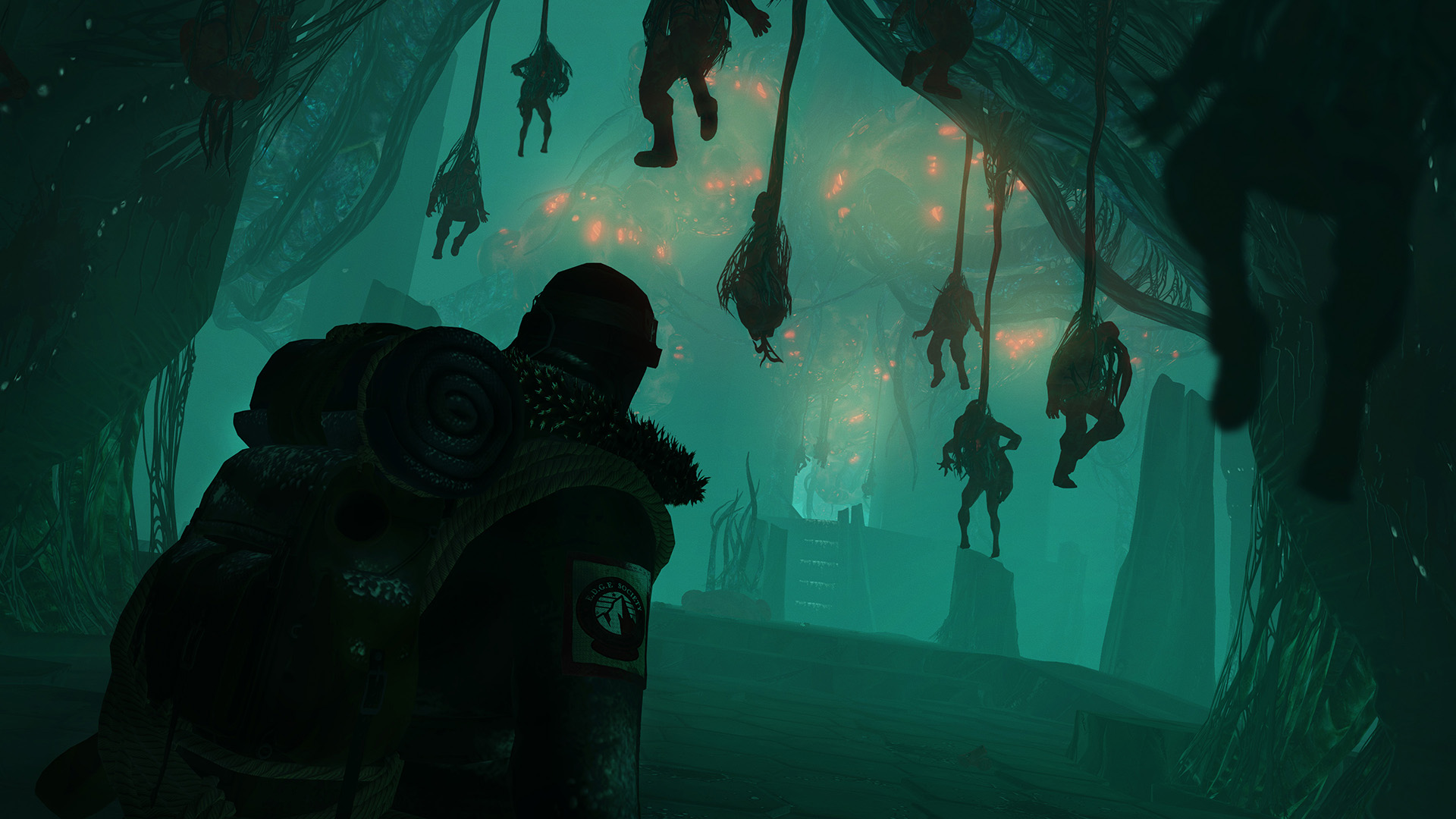Edge of Nowhere Brings Lovecraftian Horror to VR
Edge of Nowhere weaves a Lovecraftian story of eldritch beings and overmatched heroes, and makes smart use of the Oculus Rift headset.
SAN FRANCISCO – It's relatively easy to create a scary first-person game in VR. Start with a few dark corridors, add a jump scare or two, and you've at least got a starting point. Doing something in third-person, complete with stealth and combat-extensive character interactions, presents more challenges. Edge of Nowhere weaves a Lovecraftian story of eldritch beings and overmatched heroes, and makes smart use of the Oculus Rift headset.

Edge of Nowhere comes courtesy of Insomniac Games, the beloved developers behind the Ratchet & Clank series. I got a chance to try out the Oculus Rift game firsthand at the Game Developers Conference 2016, and was left wanting more – once my sense of balance recovered, anyway. Inspired by "At the Mountains of Madness" by early 20th century horror writer, H.P. Lovecraft, the game feels very respectful of its source material.
MORE: 7 Must-Play Oculus Rift Games
For the 20-minute demo, I took control of Victor Howard: a 1920s adventurer who travels to Antarctica along with his partner, Eva, in order to investigate an intriguing hypothesis. A disgraced professor back in the United States believes that the deep, forgotten places of the Earth play host to a forgotten race of sentient monstrosities, and Victor and Eva believe there's just enough truth to his claim to investigate.
I controlled Victor from an over-the-shoulder perspective and learned quickly that Edge of Nowhere rests upon three pillars: challenging platforming, tense stealth and dangerous combat. As an accomplished ice climber, Victor can make his way across frozen ice floes, be they out in the Antarctic wilderness or deep within subterranean caves. Jumping from floe to floe, using your ice picks to stay anchored, is challenging and fun.
Since Edge of Nowhere is, at its core, a survival-horror game, stealth is usually preferable to combat. As I ventured deeper into the icy continent, I found that the professor's theories were not mere conjecture. Gruesome beasts lurked on the cave roof and between the rocks. This is where the game's VR capabilities came in handy. Just by looking at a location, I could aim a rock there and toss it to act as a distraction. Hiding behind cover and simply looking around to take stock of my surroundings was arguably simpler than using a traditional camera, too.
Combat was fast, furious, and often deadly, which encouraged me to stick to stealth whenever possible. Victor can use both his pickax and whatever firearms he comes across to defeat the Lovecraftian monsters, and aiming using only my eyes was very simple. On the other hand, ammo was scarce, and monsters could easily kill me in only a hit or two.
My only concern with Edge of Nowhere was that the platforming made me feel extremely queasy, even though it was in third-person and not especially vertigo-inducing. When I finally took the headset off, I was dizzy and sweating, and not because the game had been unusually scary (like Lovecraft's stories, it goes more for creepy eeriness than heart-pounding terror). Hopefully, Insomniac will iron this issue out between now and the game's release this spring. The company has not yet announced a price.
- What’s Next for VR: More Useful Content, Less Nausea
- VR Headset Mega Guide: Features and Release Dates
- Most Anticipated Games
Sign up to get the BEST of Tom's Guide direct to your inbox.
Get instant access to breaking news, the hottest reviews, great deals and helpful tips.
Marshall Honorof is a senior editor for Tom's Guide, overseeing the site's coverage of gaming hardware and software. He comes from a science writing background, having studied paleomammalogy, biological anthropology, and the history of science and technology. After hours, you can find him practicing taekwondo or doing deep dives on classic sci-fi.

